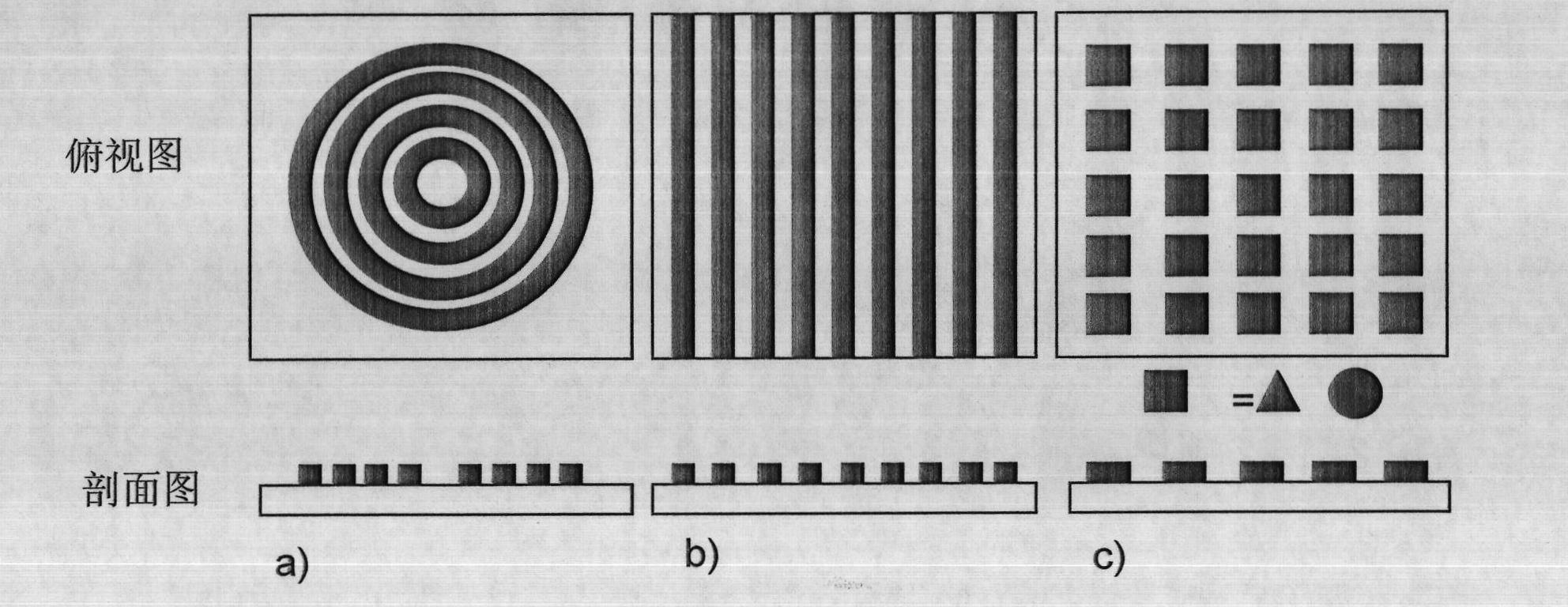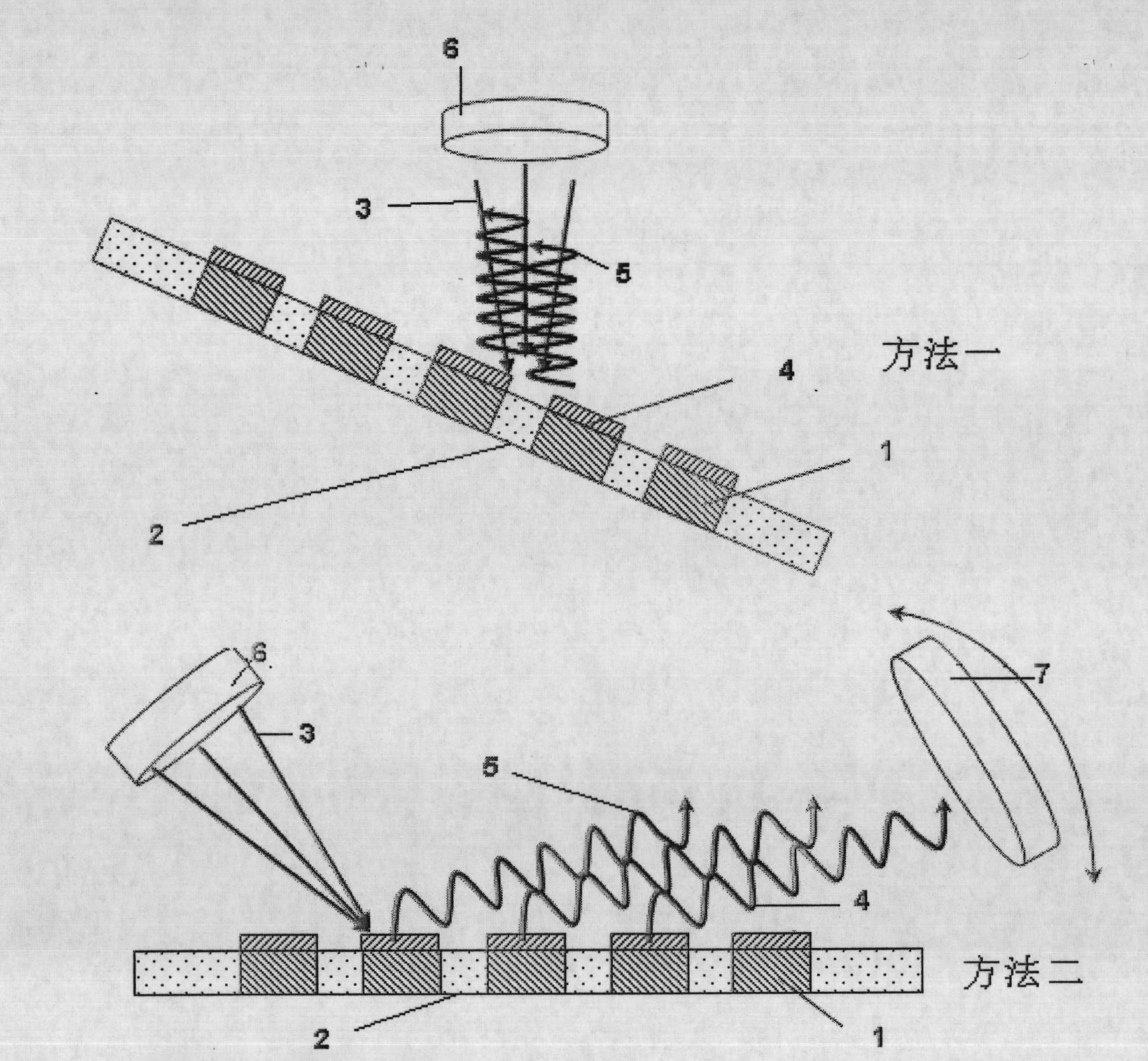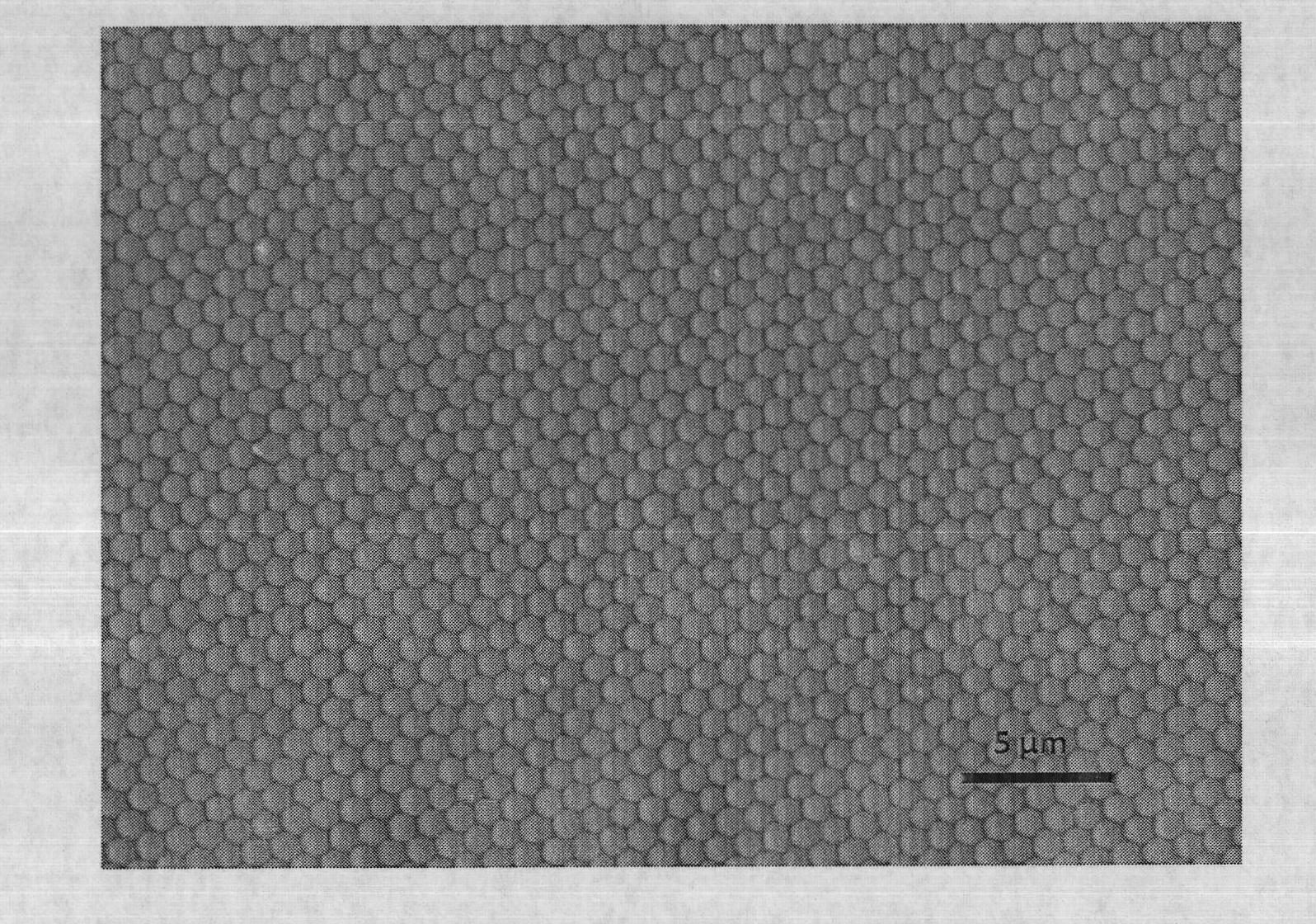Method for detecting surface enhanced raman spectrum based on interference and diffraction stimulation
A surface-enhanced Raman and spectral detection technology, which is applied in Raman scattering, scattering characteristic measurement, material excitation analysis, etc., to achieve the effect of increasing energy density, effective excitation, and increasing emission intensity
- Summary
- Abstract
- Description
- Claims
- Application Information
AI Technical Summary
Problems solved by technology
Method used
Image
Examples
Embodiment 1
[0034] Embodiment 1 illustrates various substrates of the present invention in conjunction with the accompanying drawings to implement the detection of surface-enhanced Raman spectroscopy
specific Embodiment approach
[0035] The specific implementation method comprises the following steps:
[0036]1. Prepare one-dimensional, two-dimensional or three-dimensional periodic micro-nano structures with a size range of micron or submicron. The method for preparing the periodic microstructure metal layer is microfabrication technology, including template method (for example, using different scale porous alumina templates, porous silicon templates, and colloidal crystals as templates), imprinting technology, electron beam exposure technology, Metal lift-off technology, dry etching technology, etc. build as figure 1 Shown is a periodic ring structure (a), a micro-nano strip grating structure (b) or a lattice structure (c). Each point in the lattice structure can be square, triangular or circular.
[0037] 2. Modify metal (1) films or other nanostructures on periodic microstructures, such as image 3 The silver film is evaporated on the ordered two-dimensional array of polystyrene microspheres sho...
Embodiment 2
[0040] Example 2 Surface Enhanced Raman Spectroscopy Detection of Rhodamine 6G Molecules Using a Metal Strip Structure Substrate
[0041] 1. A periodic strip structure with a period of 1.5 microns and a depth of 150 nanometers is prepared on a metal or non-metal substrate by photolithography or nanoimprinting technology.
[0042] 2. Evaporate a 150nm thick silver film on the periodic strip structure to make a SERS substrate. After coating, it still has a good periodic grating structure, and its optical picture is as follows Figure 5 shown. Rhodamine 6G molecule solution (10 -4 M) Drop it on the periodic substrate and let it dry for later use.
[0043] 3. Measure the reflectance of the P-polarized 785nm laser at different angles on the substrate adsorbed on the sample, such as Image 6 . The angle of 34 degrees corresponding to the lowest point of the reflectivity, that is, the minimum point of the curve, is the SPR incident resonance angle.
[0044] 4. Use figure 2 Th...
PUM
 Login to View More
Login to View More Abstract
Description
Claims
Application Information
 Login to View More
Login to View More - R&D
- Intellectual Property
- Life Sciences
- Materials
- Tech Scout
- Unparalleled Data Quality
- Higher Quality Content
- 60% Fewer Hallucinations
Browse by: Latest US Patents, China's latest patents, Technical Efficacy Thesaurus, Application Domain, Technology Topic, Popular Technical Reports.
© 2025 PatSnap. All rights reserved.Legal|Privacy policy|Modern Slavery Act Transparency Statement|Sitemap|About US| Contact US: help@patsnap.com



